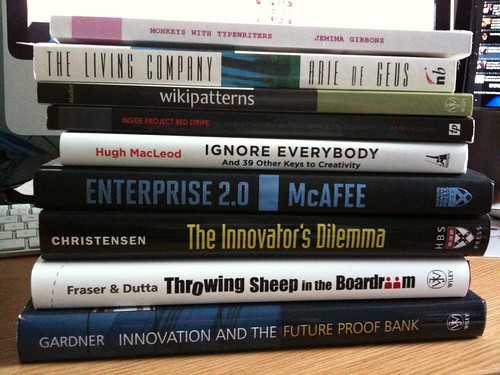2010 sees the start of a new adventure for me, as I leave the world of freelancing behind and start full time with Learning Pool – who I have been working for on a part time basis for the last six months of 2009.
I’m delighted for a number of reasons. One is the opportunity to help an established company move in new directions – more on that in a bit. Being part of something bigger is also going to really make a difference to the way I work – I’m going to have the backing of a big team of people: developers, designers, a customer support team, people who can actually manage projects properly. Anyone that knows me will appreciate what a positive thing this is!
The other key thing that Learning Pool offered me was a great working relationship with a huge number of local authorities in the UK who already have a Learning Pool product or service. My background and interest has always been more in local government and I am really excited to getting to grips with the issues facing the sector and coming up with some interesting solutions.
In terms of what it is that I am actually going to be doing, well, it’s going to pretty much be an extension of what I have been working on for the last 18 months; and indeed what I have been writing about for longer than that. Learning Pool has a great reputation at providing collaborative and social learning technology and I think there is more to be done to help councils, and other public sector organisations to become true learning organisations.
This means making use of technology like eLearning, but also the wider use of web 2.0 within the organisation – stuff like I mentioned here. There’s a lot in this, I think, mixing up culture change with innovation and knowledge management. I’m developing a model which tries to put it into some kind of context for public services, identifying:
- Drivers: efficiency and improvement
- Enablers: innovation and collaboration
- Domains: culture and technology
The drivers explain what the high level thing is that needs to be achieved: in other words, doing better with less. The enablers are the things that will help this happen: a proper way of encouraging and managing innovation in the organisation, and to encourage and adopt more collaborative behaviour. The domains are where this stuff happens: getting tech that works is important, but more so is culture – both of these things must be right to ensure those enablers happen effectively.
So this isn’t (just) about tools. I’m as interested in how you can get organisations working collaboratively and innovatively as much as I am in deploying wikis or installing WordPress. In fact, I’m most interested in combining the two – here’s the tools, and here’s how to get people using them. Or, to try and put it yet another way: blogs and wikis and all that stuff is very nice, but what does it mean to a service manager?
Anyway, there is plenty more thinking to be done. I’ll still be blogging it all here at DavePress the blog, even if DavePress the business is no longer around. If you want to chat about any of this stuff and how I, and Learning Pool, can help – you know where I am.


